Italian Beverages: Basic Overview
Common Ingredients
Common Preparing Methods
Key Taste
Drinking Etiquette
Culinary Festivals
Influence and Fusion
Classifications of Italian Beverages
-
Alcoholic
Alcoholic beverages in Italy encompass a wide range of traditional wines, spirits, and cocktails, deeply rooted in the country’s cultural and culinary practices.
They are commonly consumed to complement meals, during special occasions, and as part of daily rituals, highlighting their significance in Italian social life.
-
Non-Alcoholic
Non-alcoholic options are a staple in Italian daily life, with coffee and herbal teas taking center stage, reflecting the country’s renowned café culture.
These beverages are enjoyed by people of all ages, offering a variety of flavors and experiences that cater to different times of the day and social settings.
Italian beverages are renowned for their variety and depth, encompassing espresso-based coffees, celebrated for their intricate preparation methods, and a wide array of alcoholic drinks such as wines, grappa, and limoncello, which are central to the country’s culinary heritage.
The tradition also includes Italian sodas, carbonated drinks mixed with flavored syrups, which, despite being American refreshments, have been embraced within Italian-style refreshments.
Dive into fascinating choices of Italian refreshments before uncovering the best combo of drinks to pair with food in the country.
26 Most Popular Italian Beverages with Filters
Remember not to miss out on these Italian refreshments, which have a vast number of categories for you to explore, including, in alphabetical order, primary ingredients, flavor features, preparation techniques, drink types, and global distribution.
Also, I advise using the filter system to navigate through the refreshments easily with national, traditional, exotic, and even fusion options:
Campari
- Alcoholic
- National
- Traditional
Campari is a national Italian liqueur combining herbs and fruits created in 1860 by Gaspare Campari in Novara, Italy. With a dark red color, campari provides a fruity, bittersweet profile, making it ideal for serving as an apéritif, either with soda water or citrus juice or mixed with other spirits.
Interestingly, Italians usually drink campari before a meal, sometimes with soda water. Until 2006, that color came from insect-derived carmine dye; few people know where the beverage gets its color from now.
Limoncello
- Alcoholic
- Traditional
Limoncello is an alcoholic drink made by infusing neutral spirits with the zest of local Sorrento lemons for days or weeks. The next step is to mix the resulting yellow liquid with sugar syrup before filtering it out to create a yellow, citrus-flavored liqueur.
The concoction is especially well-known in Sardinian gastronomy. For Italians, chilled limoncello is a favorite after-dinner drink (digestivo).
But before being tempted by its aromatic sweetness, you should beware that this drink has an alcohol content of about 30% by volume.
Grappa
- Alcoholic
- Traditional
Grappa is an Italian pomace brandy, meaning that it is distilled from the solid leftovers that winemakers get after pressing grapes. They ferment the pulp of such out-of-juice grapes with yeast and lemon juice to create a colorless, peppery, and sweet liquor.
This brandy comes in two principal types of grappa bianca (white Grappa) aged in stainless steel tanks and golden grappa aged in wood barrels. Ideally, this wine is enjoyed in a curved, tulip-shaped glass to hold in the aroma.
However, Grappa is an acquired taste since it usually comes with a high alcoholic content (ranging from 35% to 70%). Aged grappa tends to have a smoother and more drinkable taste.
Sambuca
- Alcoholic
- Traditional
Sambuca is a clear, anise-flavored drink that was invented in 1851. The drink functions as a sweet digestif to enjoy after the meal or coffee break.
Surprisingly, sambuca reduces the bitterness of the coffee while improving its sweet taste with the herbal fragrance of anise. The name “Sambuca” possibly stems from “sambuco”, the Italian word for “elderberry”.
To enjoy sambuca, Italians place three coffee beans on this liqueur. Chewing those beans or flambéing sambuca before drinking it is also recommended to enhance the flavor.
Amaro
- Alcoholic
- Traditional
Amaro is an herbal liqueur in Italy having a floral sweetness. While “Amaro” means “bitter” in Italian, the dominant taste of this mix is a syrupy taste.
The secret to the drink’s magic lies in a smooth combination of spirits (or wine) and various kinds of ground herbs and spices. Then, people mull that mixture with sugar syrup before aging it in casks or bottles; the longer amaro is matured, the sweeter and more perfumed it will get.
Depending on the choices of herbs, there are countless kinds of amaro. Several popular ones are made with lemon balm, juniper, citrus peels, and wormwoods, among other things. Additionally, amaro is either mild or strong, with an alcohol content between 16% and 40%.
Prosecco
- Alcoholic
- Traditional
Prosecco is a white wine produced in the Veneto and Friuli Venezia Giulia regions around the northwestern part of Italy. It has a rich history dating back to the 16th century, boasting three main types sparkling, semi-sparkling, and still.
All three are mostly made from the native white grape glera and have a crisp, tart, and sweet taste accompanied by a fresh aroma.
Prosecco is a subtle wine with a strength of around 12%. In many parts of Italy, it is a must-have pre-dinner drink that aids digestion with its fruity sweetness.
Barolo
- Alcoholic
- Traditional
Barolo is a strong, dry, and peppery red wine made from grapes that only grow in Piedmont. For your information, Piedmont truffles go nicely with this local wine.
Another hindrance is that the production of true barolo is meticulous. Each batch requires at least 3 years of aging to become drinkable and perhaps as many as 10 more years to acquire the best taste.
Chianti
- Alcoholic
- Traditional
Chianti is a wine type coming from the Chianti region of central Tuscany.
The main ingredient for Chianti is the local juicy, thin-skinned Sangiovese grape, boasting a crimson color and high acidity.
However, being made in Chianti isn’t enough for a product to be called Chianti; it also has to contain at least 70% Sangiovese grapes. Besides its appealing ruby color, Chianti has a floral fragrance, dry sweetness, and a pleasantly bitter flavor combined with cherry undertones.
Chianti is a perfect drink to go with lunch, especially the umami flavor of meaty and starchy dishes, such as burgers, grilled meats, or pizza.
Cannonau Wine
- Alcoholic
- Traditional
Cannonau wine, courtesy of Sardina, is a product made from the grenache grape.
This full-bodied red wine has a dry, rich taste and an even richer amount of beneficial, disease-fighting antioxidants. It is also fruity, earthly, high in alcohol content, but not very acidic.
Lambrusco
- Alcoholic
- Traditional
Lambrusco is an ancient sparkling red wine produced from a high-yield, brightly-colored grape of the same name. The wine allegedly first appeared in the 1st century, coming from the Emilia-Romagna region.
Depending on the fermentation time, lambrusco can take on many qualities, from extremely sweet to incredibly dry, from light-bodied to highly fruity and scented with berries or violet.
Vermouth
- Alcoholic
- Traditional
Vermouth is a pale yellow wine with an Italian contribution, a creation of an 18th-century merchant from Turin, Piedmont. It is essentially a fortified wine (brandy-added wine).
According to Italian laws, authentic vermouth must consist of at least 75% wine. People make it fragrant by adding various kinds of herbs and spices, like wormwood (a must-have), citrus peel, ginger, and cloves.
Due to the herbal infusion, vermouth is endowed with a powerful fragrance. Of use as a medicinal drink in the past, its pleasant spicy, bittersweet taste eventually convinced many to adopt vermouth as an aperitif.
Bombardino
- Alcoholic
- Traditional
Bombardino, literally “bomb”, is an egg cocktail combination coming from the Italian Alps. Created in 1845 by a chef, it is made from leftover egg yolks, marsala wine, and alcohol.
Nowadays, fresh egg yolks, brandy, whipped cream, and spices (like cinnamon) are the building blocks of this creamy, fatty, and heart-warming drink.
Legend has it that one of the first customers exclaimed “what a bomb” after tasting it, hence the name.
Negroni
- Alcoholic
- Traditional
Negroni is a cocktail created in 1919 by a bartender in Florence, bringing together gin rather than soda water to his cocktail. The mixture merely consists of one part gin, one part red vermouth, one part Campari, and orange peel.
Negroni is now one of the most recognizable Italian cocktails in the world. It is the inspiration for many similar drinks, such as Old Pal cocktail (with Canadian rye whisky), Tegroni (using tequila instead of gin), or Queen’s Negroni (more like Britain’s Negroni).
Campari Spritz
- Alcoholic
- Traditional
Campari spritz is a cocktail concocted from the Italian national drink campari. The concoction provides a ruby red color, along with a bittersweet, fruity flavor, which ranges from cherry to orange.
To create this cocktail, you just need to mix Campari, Prosecco (or champagne), and soda water. Some ice cubes and a tawny lemon wedge will complete this killer combo.
Aperol Spritz
- Alcoholic
- Traditional
Aperol spritz is an alcoholic beverage that looks and tastes just like campari but is lower in alcohol content and popularity. Local inhabitants whip up aperol spritz in pretty much the same way as campari, only replacing one aperitif with another.
Because Aperol spritz is less bitter and consequently more drinkable.
In addition, it also has a much lower amount of alcohol than Campari spritz. Cicchetti (light snacks and side dishes) or popcorn are great with aperol spritz.
Hugo Spritz
- Alcoholic
- Traditional
Hugo spritz is a mouth-watering mix created by a barman from South Tyrol (northern Italy) who devised it in 2005 and chose the name Hugo randomly.
With prosecco and soda water, Hugo spritz distinguishes itself by utilizing elderflower liqueur (the original version contained lemon balm syrup). This combination creates a mild, fruity, sweet drink with light floral notes.
Campari And Soda
- Alcoholic
- Traditional
Campari and soda is a mixture of campari and soda water plus a lot of orange slices to improve the flavor. This drink consists of one part Campari and two parts soda water, which is more subtle.
Bellini
- Alcoholic
- Traditional
Bellini is a concoction created between the 1930s and 1940s by a bar owner in Venice. The original bellini mix includes Prosecco and puréed white peaches, while current recipes show a preference for slightly tangier yellow peaches.
Since its creation, bellini has become a trademark of Harry’s Bar, its birthplace. Today, stopping by that bar for a glass of sweet, refreshing Bellini is a highlight of any trip to Venice.
Garibaldi
- Alcoholic
- Traditional
Garibaldi is a fruity and tart cocktail that comes with a refreshing sweetness, using fresh Sicilian and Calabrian oranges. The refreshing cocktail is named after Giuseppe Garibaldi, the charismatic revolutionary leader who united Italy in the 19th century.
The Garibaldi cocktail usually mixes alcohol and orange juice with a 1:1 ratio.
Caffè Macchiato
- Non-Alcoholic
- Traditional
Caffè macchiato is a popular European espresso that combines brewed ground coffee beans with steam pressure.
This type of coffee is thicker, foamier, and more caffeine-packed than regular coffee. Simply pour a small amount of steamed milk into your cup and some foamed milk on top to create the creamy caffè macchiato.
In that way, espresso’s bold and bitter flavor is tamed by the sweet fattiness of milk to become something more balanced and irresistible.
Caffè Latte – Coffee And Milk
- Non-Alcoholic
- Traditional
Caffè latte, literally “coffee and milk”, is a drink that appeared as early as the 17th century, only after the invention of espresso.
Due to containing more milk than coffee, the latte has a tongue-pleasing sweetness and silky texture. In Italy, Italians serve caffè latte in tall glasses rather than cups or mugs.
Ristretto
- Non-Alcoholic
- Traditional
Ristretto is a darker and fuller-bodied type of coffee that comes with less bitterness. Although ristretto is best served alone, it can be a good idea to add steamed milk to your cup to further enhance the espresso’s sweetness.
Ideally, a shot of ristretto contains around 14 – 18 grams of ground coffee, producing roughly 40 ml of liquid.
Cappuccino
- Non-Alcoholic
- Traditional
A cappuccino is a coffee drink that originated in Italy and is made with espresso, steamed milk, and milk foam. The name comes from the resemblance of the drink’s color to the brown robes of the Capuchin monks.
It’s usually served in a small cup with a thick layer of foam on top and sometimes decorated with latte art or cocoa powder. A cappuccino is a popular breakfast drink in Italy and other parts of Europe, but it can also be enjoyed throughout the day in other countries.
Bicerin
- Non-Alcoholic
- Traditional
Bicerin is a hot drink from Turin, Italy, that consists of three layers: espresso, chocolate, and milk. The name means “small glass” in the local dialect, and it refers to the glassware used to serve the drink.
Interestingly, bicerin does not mix the ingredients but keeps them separate. The mixture is a specialty of Caffè al Bicerin, a historic coffeehouse in Turin that claims to have invented it in the 18th century.
Chinotto
- Non-Alcoholic
- Traditional
Chinotto is a beverage that has a dark, kind of brownish-orange along with a citrus aroma. In Italy, Chinotto is sold in bottles and cans as ubiquitously as Coke. It is something like the country’s national soda.
Arancello
- Alcoholic
- Traditional
Arancello is a sweet Italian liqueur that makes full use of orange flavor. The drink is made by soaking orange peels in alcohol, and then mixing it with sugar syrup.
This delightful drink is often served chilled as a refreshing after-dinner treat. Its popularity comes from its ability to bring a burst of citrus joy, making it a favorite in many Italian households.
What Italian Beverages to Pair with Dishes?
Italian beverages can be paired with dishes based on their intensity and flavor profiles. Here are some combos to try out:
These refreshments makes a find addition when paired with flavorful Italian staples, perfectly complementing each other flavor profile.
Once you’ve uncovered all the popular drink options of Italy, I suggest sharing them with others and also drop some comments sharing your thoughts on these fine refreshments.


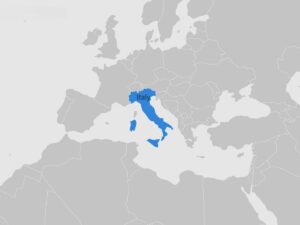
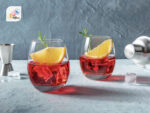

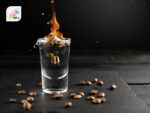
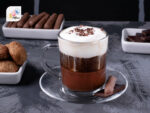
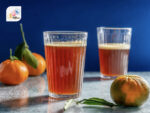

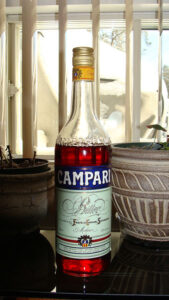
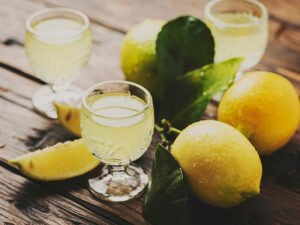
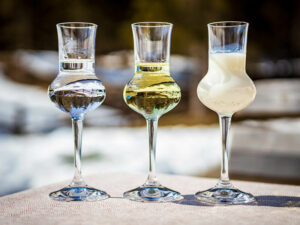
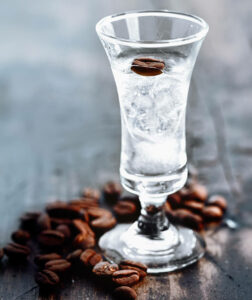
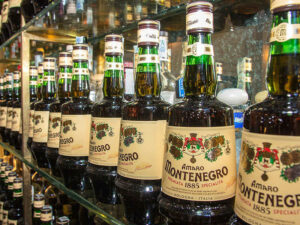
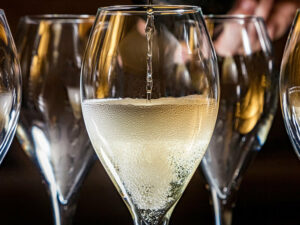
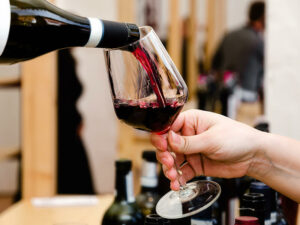
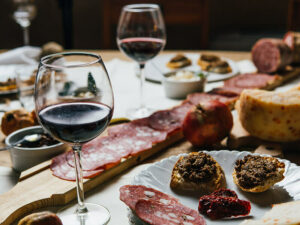
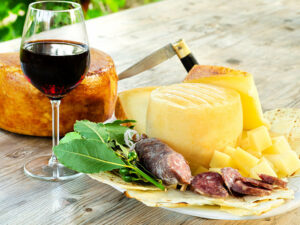
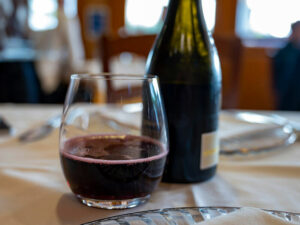
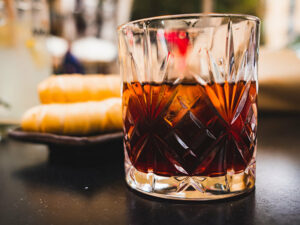
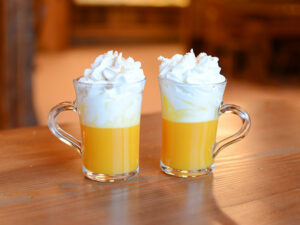
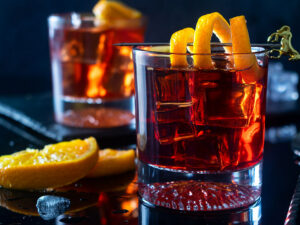
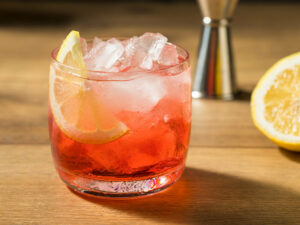
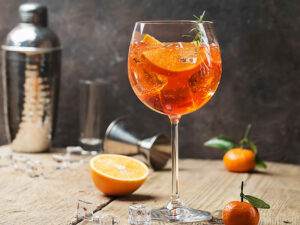
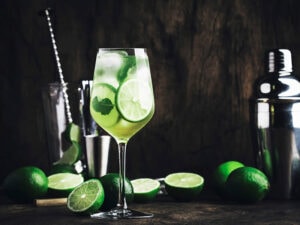
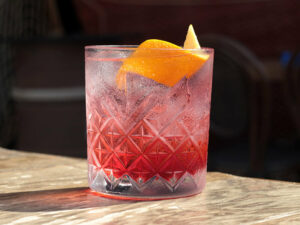
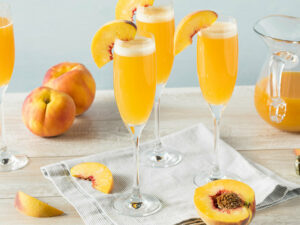
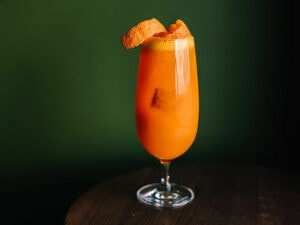
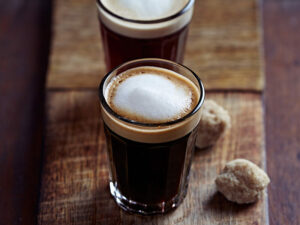
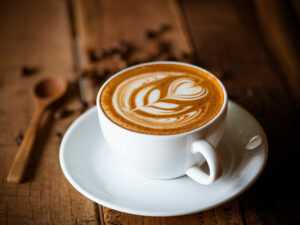
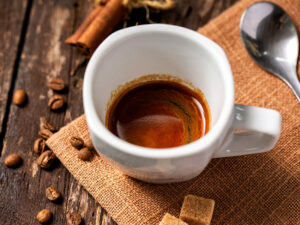
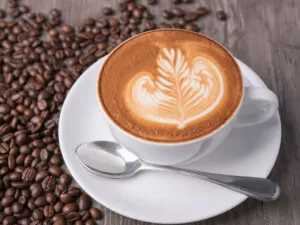
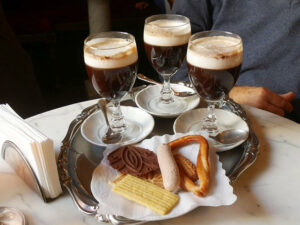
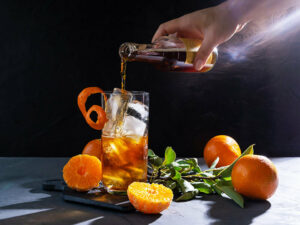
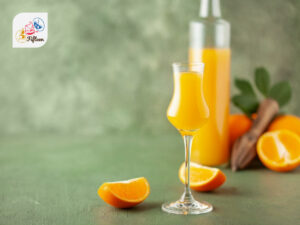
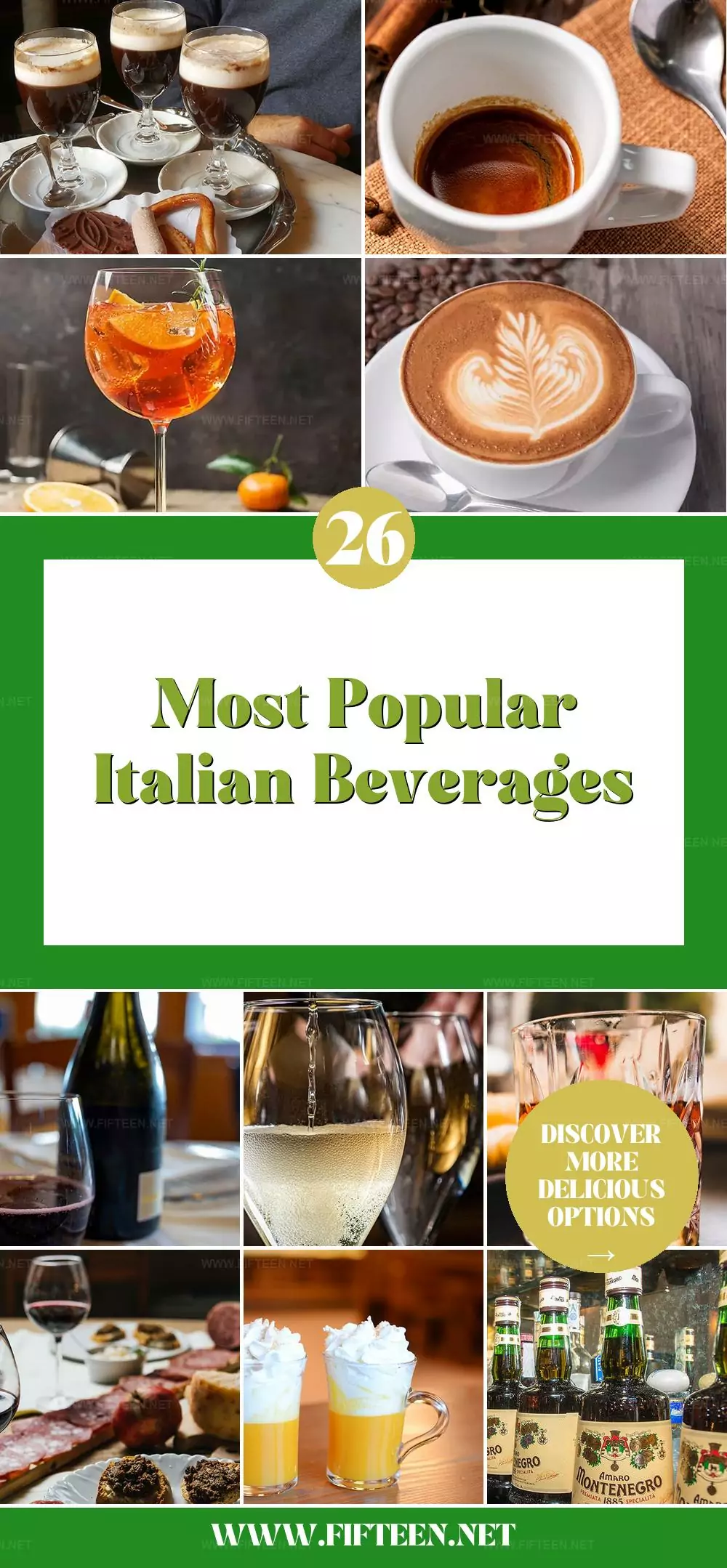
Jamie Scott
Editor in Chief, Senior Content Writer
Expertise
Home Cooking, Meal Planning, Recipe Development, Baking and Pastry, Food Editor, Cooking-video Maker, Western Food Evaluation Expert
Education
Le Cordon Bleu College of Culinary Arts
Local Community College, New York, NY
Jamie Scott is a skilled culinary expert and content creator specializing in Western cuisine. With over 15 years in the culinary field and formal training from Le Cordon Bleu, Paris, Jamie deeply understands how to blend nutrition with delicious flavors. His passion for cooking matches his commitment to making healthy eating accessible and enjoyable.
On Fifteen.net, Jamie brings a fresh perspective to classic dishes and beverages, offering readers insightful recipes, cooking tips, and a fresh view on meal planning that emphasizes taste, health, and simplicity.